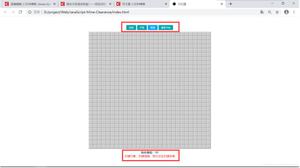Vue项目入口与小知识总结

vue-route
name使用
路由配置
import Main from './views/Main'routes: [
{
path: '/main',
name: 'main',
component: Main
}
]
视图使用
<router-link :to="{name: 'main'}">主页</router-link>router-link与系统a标签的区别
router-link:会被vue渲染成a标签,但是点击这样的a标签不能发生页面的转跳,只会出现组件的替换a:也可以完成同样的效果,但是会发生页面的转跳
路由重定向
routes: [ {
path: '/',
name: 'home',
component: Home
},
{
path: '/home',
redirect: '/', // 重定向
}
]
路由传参-1
1、html通过:to="'/course/detail/' + course.id"拼接得到跳转路由,来建立跳转连接和在链接中携带参数
2、路由通过path: '/course/detail/:id', 路由方面通过:id来接收变化的参数
3、跳转的新页面通过路由接收参数,但参数的接收在页面创建成功后,并同过钩子函数created来获取路由,在钩子函数内通过this.$route.params拿到链接中的变量,然后通过.k的形式取到变量中的值
路由:router.js
{ // path如果是通过to直接访问,路由必须完全对应
// :id代表可以完成任意内容匹配,用变量id保存
// 请求/course/detail/1 和 /course/detail/abc,id变量分别存的1和abc
// path: '/course/detail/1', // 死的
path: '/course/detail/:id', // 活的
name: 'course-detail',
component: CourseDetail
}
转跳页面:Course.vue
<template> <div class="course">
<h1>课程</h1>
<hr>
<ul>
<li v-for="course in courses" :key="course.title">
<router-link :to="'/course/detail/' + course.id">{{ course.title }}</router-link>
</li>
</ul>
</div>
</template>
<script>
let course_list = [
{
id: 1,
title: '水浒传'
},
{
id: 2,
title: '西游记'
},
{
id: 3,
title: '金瓶'
},
];
export default {
name: "Course",
data () {
return {
courses: []
}
},
// 组件创建成功去获取数据
created () {
this.courses = course_list
},
}
</script>
<style scoped>
li a {
display: block;
}
li, li a {
border: 1px solid pink;
background-color: rgba(123, 21, 56, 0.3);
margin-top: 10px;
line-height: 80px;
cursor: pointer;
}
</style>
渲染页面:CourseDetail.vue
<template> <div class="course-detail">
<h1>课程详情</h1>
<hr>
<h2>{{ ctx }}</h2>
</div>
</template>
<script>
let course_detail_list = [
'数据有误', '水浒传', '西游记', '金瓶'
];
export default {
name: "CourseDetail",
data () {
return {
ctx: ''
}
},
created () {
console.log('详情页面被渲染了');
// this.$route:负责路由的数据
// this.$router:负责路由的路径
// this.$route.params可以拿到链接中 :变量 变量中的数据
let index = this.$route.params.id;
if (index < 0 || index >= course_detail_list.length) index = 0;
this.ctx = course_detail_list[index]
}
}
</script>
<style scoped>
</style>
路由传参-2
1、html通过:to="'/course/detail?id=' + course.id"拼接新链接(url后加?的方法拼接)、
2、路由不变原样路由方式传递并携带参数
3、跳转的新页面通过路由接收参数,最终通过钩子函数中的this.$route.query来获取链接
路由:router.js
{ path: '/course/detail',
name: 'course-detail',
component: CourseDetail
}
转跳页面:Course.vue
<router-link :to="'/course/detail?id=' + course.id">{{ course.title }}</router-link>渲染页面:CourseDetail.vue
created () { let index = this.$route.query.id;
if (index < 0 || index >= course_detail_list.length) index = 0;
this.ctx = course_detail_list[index]
}
路由传参-3
1、html页面通过点击事件来发送点击事件中携带的参数 转跳的方法 (参数)
2、点击事件的方法中通过this.$router.push()传送参数push中传name或者path和params或者query加参数门
3、跳转的新页面通过let 参数的数据 = this.$route.query.参数的key 或者 this.$route.params.参数的key
路由:router.js
{ path: '/course/detail',
name: 'course-detail',
component: CourseDetail
}
转跳页面:Course.vue
methods: { 转跳的方法 (参数) {
this.$router.push({
name: 'course-detail',
params 或者 query: {
参数们
},
: {
参数们
}
})
}
}
渲染页面:CourseDetail.vue
created () { let 参数的数据 = this.$route.query.参数的key 或者 this.$route.params.参数的key
}
仓库
1、通过点击事件将数据提交存入到仓库中
btnClick () { // alert(this.$store.state.title)
// this.$store.state.title = 456;
this.$store.commit('updateTitle', this.val);
console.log(this.$store.state.title)
}
或者通过watch监听变量的变化更新仓库中的变量值
watch: { val () {
// this.$store.commit('updateTitle', this.val);
this.$store.state.title = this.val
}
}
2、通过全局变量mutations来更新仓库中的数据
import Vue from 'vue'import Vuex from 'vuex'
Vue.use(Vuex);
export default new Vuex.Store({
// 全局可以访问的变量 - 获取值
// 组件内:this.$store.state.title
state: {
title: '主页'
},
// 全局可以访问的方法 - 修改值
// 组件内:this.$store.commit('updateTitle', '新值')
mutations: {
updateTitle (state, newValue) {
state.title = newValue
}
},
actions: {}
})
3、通过全局变量state来获取仓库中的数值this.$store.state.title,并通过computed监听仓库中的值的变化
computed: { title () {
return this.$store.state.title
}
}
前后台数据交互axios
安装
>: cd 项目目录>: cnpm install axios --save
配置:main.js
import Axios from 'axios'Vue.prototype.$axios = Axios;
跨域问题(同源策略):Access-Control-Allow-Origin => CORS
前提:前台向后跳请求数据1)服务器不一致 - ip
2)应用不一致 - 端口
3)协议不一致 - http <-> https
django解决跨域
'''1)安装django-cors-headers模块
2)在settings.py中配置
# 注册app
INSTALLED_APPS = [
...
'corsheaders'
]
3)添加中间件
MIDDLEWARE = [
...
'corsheaders.middleware.CorsMiddleware'
]
4)允许跨域源
CORS_ORIGIN_ALLOW_ALL = True
'''
axios请求方式
get
this.$axios({ url: 'http://localhost:8000/test/data/',
method: 'get',
params: {
usr: 'zero',
pwd: '000'
}
}).then((response) => {
console.log(response.data)
}).error((error) => {
console.log(error)
});
this.$axios.get('http://localhost:8000/test/data/', {
params: {
usr: 'zero',
pwd: '000'
}
}).then((response) => {
console.log(response.data)
}).error((error) => {
console.log(error)
});
post
#客户端通过json发送的post数据被放到body中需要通过request.body获取#import json
#print('post:',json.loads(request.body.decode('utf-8')))
this.$axios({
url: 'http://localhost:8000/test/data/',
method: 'post',
data: {
username: 'owen',
password: '123'
}
}).then((response) => {
console.log(response.data)
}).error((error) => {
console.log(error)
});
this.$axios.post('http://localhost:8000/test/data/', {
username: 'owen',
password: '123',
headers: {
'Content-Type': 'urlencoded'
}
}).then((response) => {
console.log(response.data)
}).error((error) => {
console.log(error)
});
前台操作Cookie:vue-cookie
安装
>: cd 项目目录>: cnpm install vue-cookie --save
配置:main.js
import cookie from 'vue-cookie'Vue.prototype.$cookie = cookie;
使用:在任何方法中
// token是后台返回的// 设置cookie
// this.$cookie.set(key, value, time)
this.$cookie.set('token', token, 1);
// 取出cookie
// this.$cookie.get(key)
console.log(this.$cookie.get('token'));
// 删除cookie
// this.$cookie.delete(key)
this.$cookie.delete('token');
以上是 Vue项目入口与小知识总结 的全部内容, 来源链接: utcz.com/z/376490.html







